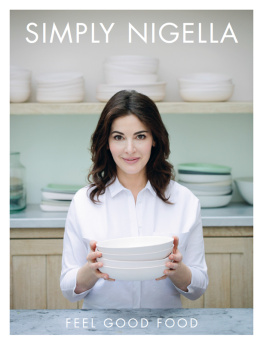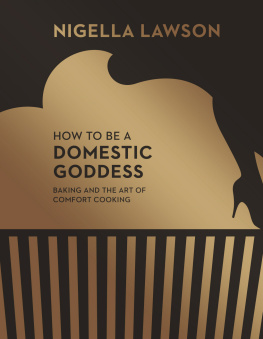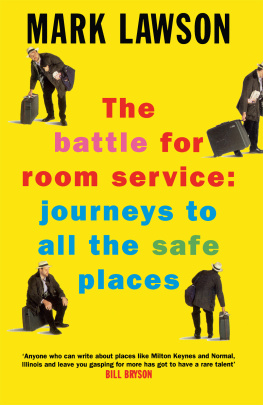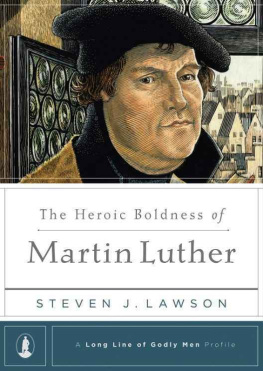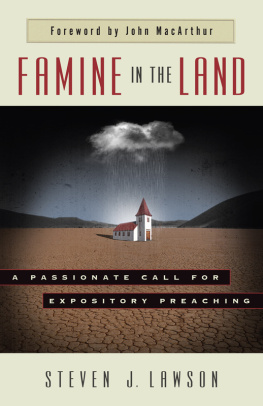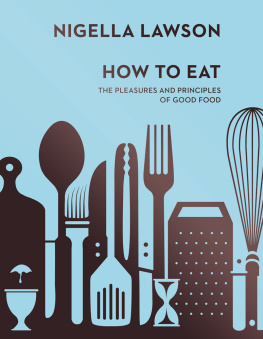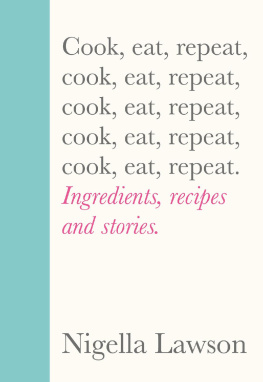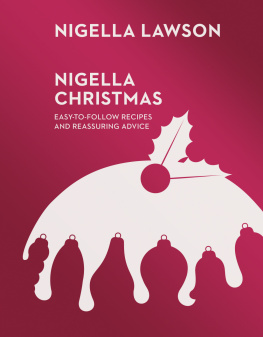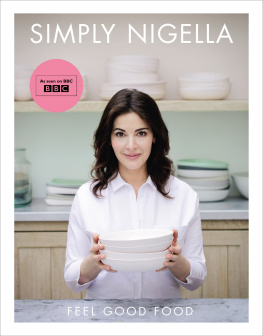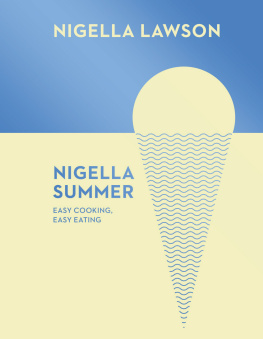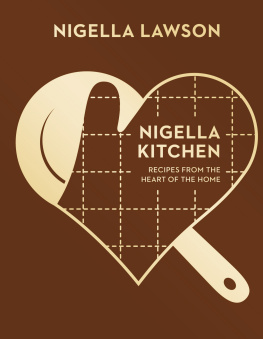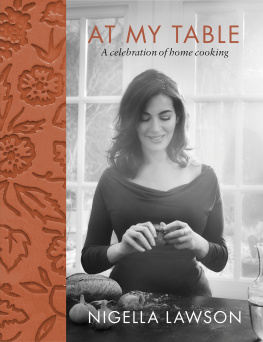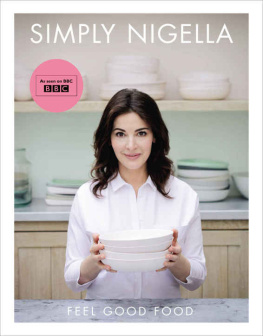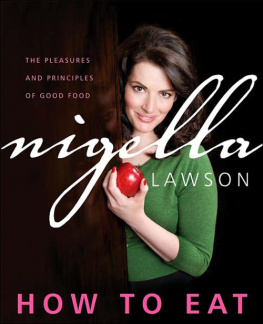SIMPLY NIGELLA
NIGELLA LAWSON
Photographs by KEIKO OIKAWA

The author and publisher have provided this e-book to you for your personal use only. You may not make this e-book publicly available in any way. Copyright infringement is against the law. If you believe the copy of this e-book you are reading infringes on the authors copyright, please notify the publisher at: http://us.macmillanusa.com/piracy.
For Mimi and Bruno

It is a commonplace to talk of cooking as being therapeutic and there are times when that is the case but for me cooking stems from an engagement with life, which in itself combines hopefulness with playfulness. These gifts restored to me, this book began to emerge.
Of course, even when I felt I couldnt cook, or didnt have a kitchen of my own, I still needed to bring food to the table, and I am grateful for this. If cooking isnt hinged on necessity, it loses its context, and purpose. I cook to give pleasure, to myself and others, but first it is about sustaining life, and only then about forging a life.
We make worlds for ourselves all the time; for me, the locus has always been the kitchen. And while there have been times in my life when cooking has created a safe place, and a vital space where I could lose myself in creative concentration, all of which have been documented in my previous books, with this book it has been different. I first had to cook myself strong. Now, you will never hear me talking about healthy food. I loathe the term, but not as much as I am disgusted by the contemporary mantra of clean eating. In How To Eat, written so long ago, I wrote: What I hate is the new-age voodoo about eating, the notion that foods are either harmful or healing, that a good diet makes a good person and that that person is necessarily lean, limber, toned and fit Such a view seems to me in danger of fusing Nazism (with its ideological cult of physical perfection) and Puritanism (with its horror of the flesh and belief in salvation through denial).
The Clean-Eating brigade seems an embodiment of all my fears. Food is not dirty, the pleasures of the flesh are essential to life and, however we eat, we are not guaranteed immortality or immunity from loss. We cannot control life by controlling what we eat. But how we cook and, indeed, how we eat does give us as much as anything can mastery over ourselves.
The food in this book is what Ive been cooking for myself and, although the impetus was certainly to seek out food that made me feel physically strong, I have always believed that food you cook for yourself is essentially good for you. This is not just because real ingredients are better for you than fake foods, but because the act of cooking for yourself is in itself a supremely positive act, an act of kindness. And while I have read much about mindful eating, I have not found much, if anything, on mindful cooking. When I cook, I am absorbed in the simple rituals of chopping, stirring, tasting, losing myself in the world of flavor, sensation, and straightforward practicalities.
And as I progressed, this book became fused with the joyful realities of making a new home. It makes me smile to see the colors of my kitchen, and the house I have created around myself, reflected in the colors of this book. But, of course, it also necessarily tells the broader story of how I live: how I feed my friends and family, the aesthetic pleasure I derive from food, and my belief that what and how we cook can make our lives easier, make us feel better and more alive, and connect us to ourselves, to others, and the world.
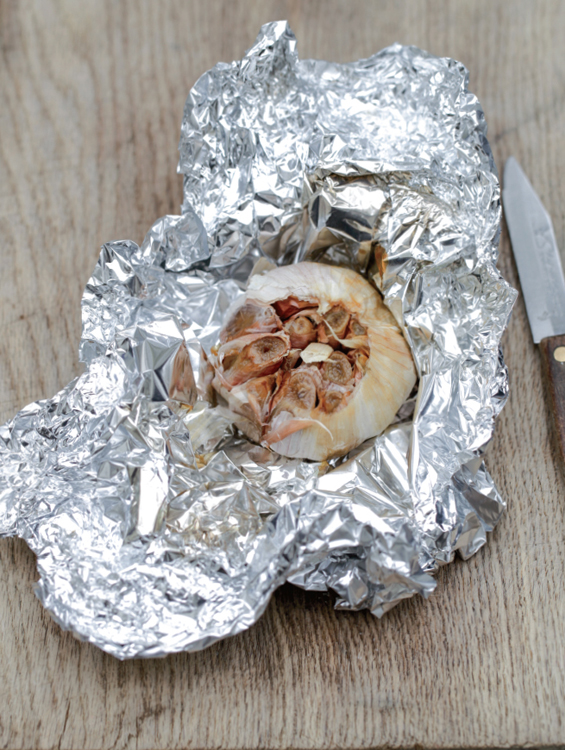
A NOTE ON INGREDIENTS AND UTENSILS
The editor who commissioned my first book told me that he always thought of How To Eat as the Pea, Marsala, and Rhubarb Cookbook. And its true that I am a person of enthusiasms, and go through bouts of extreme reliance on certain ingredients. This is manifested in Simply Nigella by the fulsome use of cold-pressed coconut oil, ginger, chiles, and lime: I cant seem to cook without reaching for one of these in my kitchen right now. My books are nothing if not a diary of how I eat, and how I cook, so whatever my current passions are will always be reflected in their pages.
Sometimes the ingredients I require you to buy are not those stocked in every supermarket, but they are always easily available online, and I do ensure that any recherch ingredient gets proper use. I do not want to go shopping unnecessarily, and nor I presume do you. Much as I enjoy the ritual of cooking, I do feel it can be good to break out of ones normal routine and repertoire, even if it means adding to the clutter already in my kitchen cupboards. And I do want to stress that if I suggest a foray to, for example, an Asian supermarket or its online equivalent it is because the requisite ingredients there tend to be much cheaper, and of much higher quality, than the versions stocked in a local supermarket. A list of stockists for such ingredients can be found on www.nigella.com/books/simply-nigella/stockists. Rest assured, this refers to just a handful of recipes.
I have referred to short grain brown rice a number of times in these pages: this is different from regular brown rice, as it takes less time to cook, and absorbs liquid differently.
I have mentioned caramelized garlic in a number of recipes, and have always given instructions on how to make a batch using a very hot oven, but it makes sense to bake the garlic head when you already have something in the oven, and you can simply bake it for longer at a lower temperature at the same time. Thus, 45 minutes in a 425F oven translates to 2 hours at 325F, or you can find some mid-point in between. At all times in the kitchen, you need to make your recipes work for you, not the other way around.
Ginger is required to be peeled and grated in many recipes in this book. The easiest way to peel ginger is to use the tip of a teaspoon, and a fine microplane grater is the best tool for grating ginger, as well as mincing garlic and zesting citrus fruit.
Coconut oil is specified as cold-pressed, and this is sometimes labeled as raw or extra-virgin; it is distinct from deodorized or refined types. Coconut oil is solid until the temperature reaches 76F, at which point it liquifies.
Eggs are always extra large, and preferably free-range organic.
When baking, all ingredients unless otherwise specified should be at room temperature before you start.
Where appropriate, I have mentioned when a recipe is either dairy- or gluten-free, but only where one might expect it to contain dairy or gluten (such as the baking recipes). They are also indicated by colored dots green for dairy-free, pink for gluten-free in the index.
I prefer sea salt flakes when I cook or eat, and the measurements given are not interchangeable with fine salt. If you are replacing them with fine salt, half the amount is required.
Where no freezing or make-ahead tip is given alongside a recipe, neither is recommended.
Flour cup measures are scooped and leveled and brown sugar cup measures are firmly packed unless otherwise stated.
Many recipes suggest using cast iron skillets (although alternatives are always given too). Treated well, and seasoned properly, they are the most effective non-stick frying pans, and can be used in the oven as well as on the stove. They also last a lifetime, while pans with a non-stick coating need to be replaced regularly. Mine are very basic and inexpensive, but they serve me well, and I find both the ancient ore they are forged from, and their steady heft, reassuring. Through them, I feel I am linked to a long line of cooks down the ages. The heavy-based Dutch ovens I use in many recipes are enameled cast iron and come with a tight-fitting lid; if you are using something less robust then the cooking times may need to be adjusted. A more luxurious and relatively new-fangled addition to the cast ironware in my kitchen is a slow cooker. As with all cast iron, it retains the heat well and evenly, and avoids any problem of hot spots. Moreover, the pot part can be used in the oven and on the stove.

